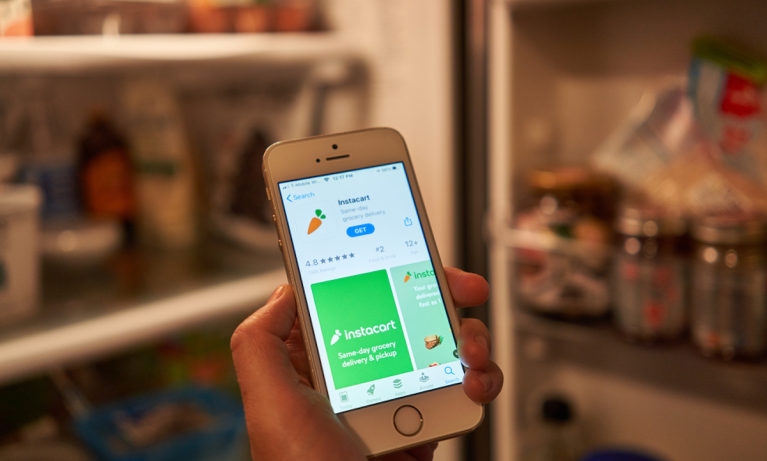
As on-demand delivery aggregators look to capture more of consumers’ grocery spending, key players such as DoorDash and Instacart are finding new ways to insert their technology into consumers’ grocery shopping routines.
The former, for its part, is looking to rewards collaborations to drive adoption. DoorDash is incentivizing grocery purchasing through its new expanded partnership with Chase, announced Thursday (Aug. 1). Through the new benefits, cardholders with Sapphire Reserve DashPass memberships get two offers of $10 off grocery, convenience or other orders from non-restaurant verticals per month, and other kinds of cardholders get the same deal once a month or once a quarter. The move aims to cement DoorDash as the go-to eGrocery platform for Chase cardholders, boosting new verticals sales with these consumers.
“We’re excited to expand our longstanding partnership with Chase consumer branded cards to become its exclusive grocery and restaurant delivery platform partner,” Usman Cheema, the San Francisco-based aggregator’s global head of business development, said in a news release.
Meanwhile, Instacart, already known for its eGrocery offerings, is looking to grow its role in consumers’ grocery shopping journeys by focusing on expanding its presence in physical stores. On Tuesday (Aug. 6), Instacart announced that Aldi South Group is testing its smart cart subsidiary Caper’s technology in Austria.
“We’re thrilled that ALDI SOUTH Group is the first retailer to test Caper Carts in Europe, enabling us to bring Instacart’s leading grocery technology to the region for the first time,” Instacart Vice President and General manager of Connected Stores David McIntosh said in a news release. “Since launching Caper Carts with other retailers in the U.S., we’ve seen an incredibly positive response from customers of all ages and we’re excited to begin scaling globally.”
The news came days after Instacart announced on Thursday that a three-store grocery chain in Utah was also deploying the company’s AI-powered smart carts. These carts are meant to enable a “more personalized shopping experience,” integrating with the grocer’s loyalty program and providing targeted recommendations, among other features.
“We’re proud to provide local grocery partners like Davis Food & Drug with tech solutions that seamlessly connect their in-store and online offerings and deliver personalized experiences through convenient, cost-effective options,” said Nick Nickitas, Instacart’s general manager, Local Independent Grocery.
These moves come as consumers seek out both digital and physical grocery options. PYMNTS Intelligence data show that, as of last year, 52% of grocery shoppers made purchases online and in person, while 43% did so exclusively in person and less than 6% did so only via digital channels.
Meanwhile, Uber Eats, Grubhub and Shipt are looking to expand their grocery presence by adding more grocers to their marketplaces. In June, the former added more than 150 Save A Lot locations, and Target-owned retail aggregator Shipt announced a partnership with The Save Mart Companies to deliver from more than 170 of its stores.
Last month, Craig Whitmer, vice president of new verticals at Grubhub, explained in an interview with PYMNTS how the aggregator’s nationwide grocery launch with Albertsons plays into its goals to become a significant player in the eGrocery space.
“The thing is, we know what we need to do to get on par with our competitors. We’ve been … later in this space than others have,” Whitmer said. “But I feel confident we’ll catch up very, very quickly.”
Many consumers, however, favor grocers’ direct ordering channels over marketplaces. The PYMNTS Intelligence study “How Preferred Payment Availability Can Reduce Cart Abandonment” revealed that 44% of consumers prefer retailers’ websites or apps when shopping for groceries online, while 29% prefer online marketplaces and 24% prefer brands’ sites or apps.
For all PYMNTS retail coverage, subscribe to the daily Retail Newsletter.